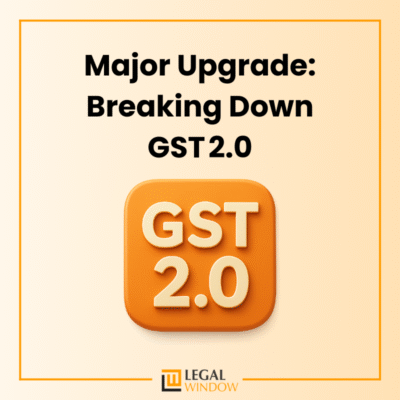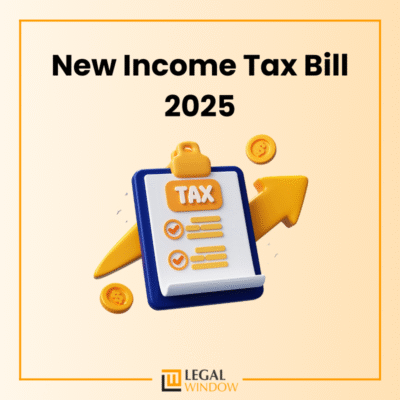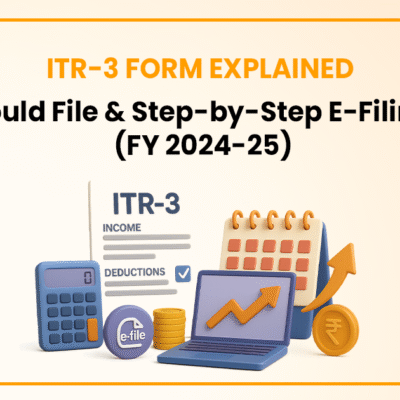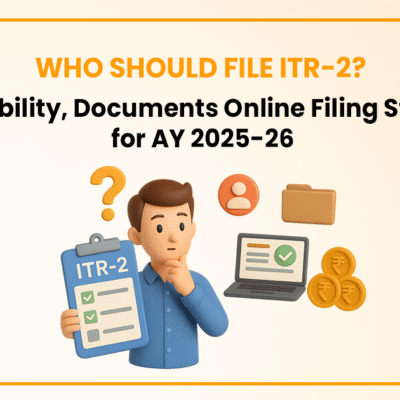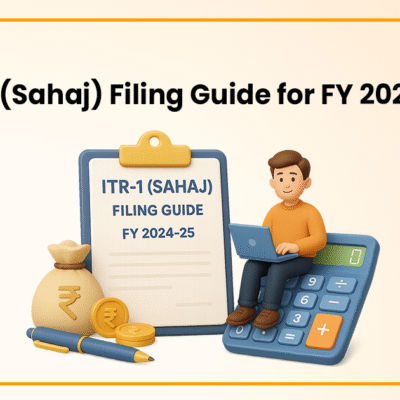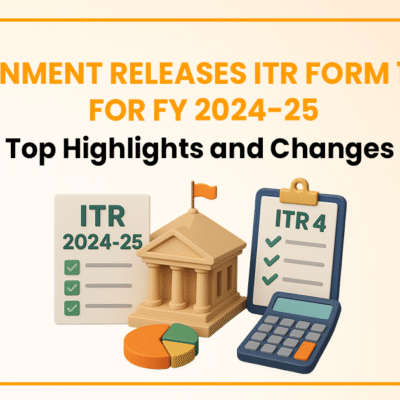Dividend Declaration: Meaning, Sources, Mandatory Conditions and Procedure
- April 22, 2023
- Company Law

When a company announces that it will be issuing dividends, it's known as a dividend declaration. Dividends are a distribution of a company's profits to its shareholders. A dividend declaration is the process through which a company announces its intention to pay dividends to its shareholders. Dividends are a way for companies to reward their shareholders for their investment and loyalty to the company. In this article, we will discuss the sources of dividend, mandatory conditions for declaration of dividend and the procedure involved in the dividend declaration.
Quick Look
Dividend is a portion of a company's profits that is distributed to its shareholders as a return on their investment. It is one of the primary ways in which companies reward their shareholders. Dividends can be paid out in the form of cash, stock or other assets. Dividend Declaration is the process through which a company's board of directors approves the payment of dividends to its shareholders. Let us move on to discuss briefly about Dividend Declaration and its Procedure in great detail.
The Meaning of Dividend Declaration
Dividend Declaration is the process of a company's board of directors announcing that a portion of the company's profits will be distributed to shareholders as a dividend. It is a formal declaration made by the company's management, indicating the amount of money that will be paid to shareholders as a dividend. Dividends can be paid out in cash, stock, or other forms of assets. The decision to declare a dividend is usually made by the company's board of directors and is based on the company's financial performance, cash reserves, and other factors.
The Benefits of Dividend Declaration
Dividend declaration can provide several benefits to a company, its shareholders, and the market. Some of the benefits of dividend declaration include:
- Attracting Investors: Dividend declaration can attract investors to a company by providing them with a regular income stream. Many investors prefer to invest in companies that pay regular dividends.
- Enhancing Shareholder Value: Dividends can enhance shareholder value by providing them with a return on their investment.
- Improving Market Perception: Dividend declaration can also improve the market perception of a company, as it demonstrates the company's financial stability and commitment to its shareholders.
- Tax Benefits: Dividend income can also provide tax benefits to shareholders in many jurisdictions, as it is often taxed at a lower rate than other forms of income.
Factors Influencing Dividend Declaration
Before declaring dividends, the company's board of directors considers various factors, including:
- Profitability: The company's profitability is a crucial factor in determining the amount of dividends to be paid. A company with higher profits can afford to pay higher dividends to its shareholders.
- Cash Flow: A company's cash flow position is also a critical factor that influences the dividend declaration. If a company has sufficient cash reserves, it can declare higher dividends, even if it has lower profits.
- Growth Prospects: A company that is still in its growth phase may choose to retain its earnings to invest in future growth opportunities, rather than pay dividends.
- Shareholders' Expectations: The company's board of directors also considers the expectations of its shareholders regarding dividends. If the shareholders are expecting higher dividends, the board may declare higher dividends, even if the company's profits are not significant.
Sources of Dividend under Dividend Declaration
Dividends are generally paid out of a company's profits. However, a company may not always have profits to distribute as dividends. In such cases, dividends may be paid out of the company's reserves or accumulated profits. The sources of dividend can be categorized as follows:
- Current Year Profits - Dividends are generally paid out of a company's current year profits. This means that the company has earned a profit in the current financial year, and it decides to distribute a portion of that profit to its shareholders.
- Reserves - A company may have accumulated profits from previous years that have not been distributed as dividends. In such cases, the company may choose to distribute dividends out of its reserves.
- Surplus Cash - A company may also choose to distribute dividends out of surplus cash it has on hand. This may occur if the company does not have any profits or reserves to distribute as dividends.
Mandatory Conditions for Declaration of Dividend
There are certain mandatory conditions that a company must fulfill before it can declare dividends. These conditions are:
- Approval by the Board of Directors: The board of directors must approve the declaration of dividend. The board of directors is responsible for making decisions on behalf of the company and for ensuring that the company's interests are protected.
- Declaration of Profits: The company must declare its profits before it can declare dividends. The profits can be declared after deducting all expenses and taxes.
- Dividend Coverage Ratio: The company must maintain a dividend coverage ratio of at least 1.5 times. This means that the company must have profits that are at least 1.5 times the amount of dividends it plans to pay.
- Compliance with Regulations: The board must ensure that the dividend declaration complies with all legal and regulatory requirements. This includes compliance with the Companies Act, Securities and Exchange Board of India (SEBI) regulations, and other applicable laws.
Procedure for Declaring Dividends
The procedure for declaring dividends varies depending on the company's jurisdiction and its governing laws. However, there are several general steps that most companies follow when declaring dividends. These include:
- Preparation of Dividend Declaration: The first step is the preparation of the dividend declaration. This includes determining the amount of dividend to be paid, the date of declaration and the date of payment.
- Approval by the Board of Directors: The dividend declaration must be approved by the board of directors. The board of directors will review the dividend declaration and ensure that it complies with all regulations.
- Announcement of Dividend: Once the dividend declaration has been approved by the board of directors, it must be announced to the public. This can be done through a press release or by posting the information on the company's website.
- Record Date: The record date is the date on which the company determines the shareholders who are eligible to receive dividends. The record date is usually a few days after the dividend declaration.
- Payment of Dividend: The final step is the payment of dividend to the eligible shareholders. The payment can be made through electronic transfer or by issuing dividend checks.
Important points of consideration to be kept in mind by Company while issuing Dividend Declaration
Dividend declaration is a crucial decision that companies have to make to distribute profits to their shareholders. While issuing dividend declaration, there are several important points of consideration that companies need to keep in mind.
- Financial Stability: The first and foremost consideration while issuing dividend declaration is the financial stability of the company. Companies should ensure that they have sufficient profits to pay dividends without compromising their financial stability. It is essential to maintain a balance between dividend payouts and reinvesting profits for future growth.
- Legal Obligations: Companies need to comply with the legal obligations related to dividend declaration. The laws of the country where the company is registered and listed on the stock exchange govern the dividend declaration. Companies need to adhere to the guidelines provided by regulatory bodies such as Securities and Exchange Commission (SEC) in the US, Securities and Exchange Board of India (SEBI) in India, and Financial Conduct Authority (FCA) in the UK.
- Shareholders' Expectations: Companies need to consider the expectations of their shareholders while issuing dividend declaration. Shareholders invest in the company with the expectation of earning returns on their investment. If a company fails to meet the shareholders' expectations, it may result in a decline in the company's stock price.
- Dividend Policy: Companies need to have a clear and consistent dividend policy in place. The dividend policy should define the criteria for dividend payouts, such as the percentage of profits to be distributed as dividends, the frequency of dividend payments, and the conditions under which dividends can be increased, decreased or suspended.
- Cash Flow: Companies need to consider their cash flow situation while issuing dividend declaration. Dividend payouts should not impact the company's ability to meet its operational expenses or invest in future growth. Companies need to maintain a sufficient cash reserve to sustain any unforeseen financial challenges.
- Tax Implications: Companies need to consider the tax implications of dividend declaration. Dividends are usually subject to tax, and the tax rates vary depending on the country where the company is registered and the shareholders' country of residence. Companies need to calculate the tax liability and provide relevant information to shareholders.
- Communication with Shareholders: Companies need to communicate the dividend declaration to their shareholders effectively. The announcement should be clear and concise, stating the amount and frequency of the dividend payout. Companies need to inform shareholders about any changes in the dividend policy, the reasons for such changes, and the expected impact on shareholders.
Endnote
Dividend declaration is an important process that can benefit both companies and their shareholders. By declaring dividends, companies can attract more investors, enhance shareholder value, and increase investor confidence in their management and financial health. The procedure for declaring dividends involves several steps, including a board meeting, announcement, record date, and payment date. Companies must follow the applicable laws and regulations while declaring dividends and ensure that they have sufficient cash reserves to meet their dividend obligations.
Feel free to connect with our Experts at Legal Window, if you need assistance in understanding the Dividend Declaration Procedure. Our Experts would be Happy to Help.
Neelansh Gupta is a dedicated Lawyer and professional having flair for reading & writing to keep himself updated with the latest economical developments. In a short span of 2 years as a professional he has worked on projects related to Drafting, IPR & Corporate laws which have given him diversity in work and a chance to blend his subject knowledge with its real time implementation, thus enhancing his skills.
Categories
- Agreement Drafting (23)
- Annual Compliance (13)
- Change in Business (37)
- Company Law (150)
- Compliance (90)
- Digital Banking (3)
- Drug License (4)
- FEMA (17)
- Finance Company (42)
- Foreign Taxation (9)
- FSSAI License/Registration (15)
- GST (124)
- Hallmark Registration (1)
- Income Tax (214)
- Latest News (36)
- Miscellaneous (170)
- NBFC Registration (8)
- NGO (18)
- SEBI Registration (6)
- Section 8 Company (10)
- Start and manage a business (27)
- Startup/ Registration (134)
- Trademark Registration/IPR (48)
Recent Posts
- Major Upgrade: Breaking Down GST 2.0 September 15, 2025
- New Income Tax Bill 2025 August 27, 2025
- ITR-3 Form Explained: Who Should File & Step-by-Step E-Filing Guide (FY 2024-25) June 25, 2025
All Website Tags
About us
LegalWindow.in is a professional technology driven platform of multidisciplined experts like CA/CS/Lawyers spanning with an aim to provide concrete solution to individuals, start-ups and other business organisation by maximising their growth at an affordable cost.


